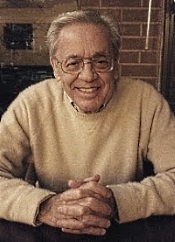 At least you can't say new, contemporary music isn't adventurous. You really never know quite what to expect, from cacophonous din to spiritual exaltation to romantic sentimentality. Take Italian composer Massimo Botter (b. 1965) for instance. His latest album, carrying the questionable title Scream, contains not the background score for another Wes Craven horror picture but four short and fascinating instrumental and orchestral compositions that run high to pictorial percussion.
At least you can't say new, contemporary music isn't adventurous. You really never know quite what to expect, from cacophonous din to spiritual exaltation to romantic sentimentality. Take Italian composer Massimo Botter (b. 1965) for instance. His latest album, carrying the questionable title Scream, contains not the background score for another Wes Craven horror picture but four short and fascinating instrumental and orchestral compositions that run high to pictorial percussion.The selections on the disc cover a period of about twelve years, from one of the composer's earliest works to one of his latest. The thing is, although there is a greater complexity in the later pieces, there is also a distinct similarity in tone among them; they are dark and aggressive. You'll find little serenity here, a little of which might have lightened the mood considerably.
The first track is "Sentiero in un deserto di lava" ("Path in a desert of lava," 2006), a sixteen-minute piece for bass clarinet and orchestra that depicts a journey to the slopes of Mt. Etna. Naturally, it includes any number of volcanic eruptions en route. The music is highly episodic and descriptive, with the sonorous timbres of the bass clarinet evoking the hazards and beauties along the traveler's path. OK, so you won't hear the kind of universally memorable tunes in Botter's music that you'll find in a Beethoven or Mozart concerto, nor the emotional intensity of a Bartok or Stravinsky. Still, the booklet note compares "Sentiero" to something "vaguely Berg-oriented," and, indeed, if you like the romantic-expressionist creations of Austrian composer Alban Berg, you may well enjoy this music, too.
Next is "Seven Blades" (2008), nine minutes long, which Botter wrote for an ensemble of only seven instruments, so it works as a small chamber piece. It portrays "a metropolitan journey" and as a consequence is a tad less rambunctious than the Etna outing. Following this is "And at the end... the scream" (2007), eleven minutes long, for oboe and fourteen instruments, the title of which gives the album its name. The writing is leaner here than in the first two pieces, while being edgier and more mysterious as well. Again it's the soloist who stands out, yet the percussion also has its day, the whole work casting a slightly sinister shadow. I liked it best of all the works on the disc and would love to see Botter expand it into something longer and more substantial, perhaps using it as one movement in a larger symphonic work.
The final composition is "Zeula" (1996), fourteen minutes. I understand it won the Memoriam Takemitsu Award in Tokyo the year of its première and it derives from a reading of sci-fi/fantasy author Ray Bradbury's The Illustrated Man. Having spent many an hour teaching Bradbury's collection of short stories, I had high hopes of Botter's music eliciting fond memories and, more important, conjuring up vivid images of Bradbury's tales. Alas, it didn't happen. When I finished listening, I hadn't the faintest idea what notes related to what narratives. Nevertheless, I did find the music appealing, a bit more traditional in comparison to the other works on the disc, with lusher orchestral harmonies.
Probably few other conductors or orchestras could play this material any better than Maestro Jose Ramon Encinar and the Orquesta de la Comunidad de Madrid. Encinar and his forces are as highly expressive as this emotionally charged music demands, without their ever resorting to the temptation of inordinate hostility, which I could well see happening. Instead, they create simple, straightforward soundscapes of graphic beauty and, at times, sublime if contentious eloquence.
The sound, recorded in Madrid in 2009 and 2010 (the first track recorded live) stretches a fair distance across the room from speaker to speaker, whether it be the full orchestra or the seven instruments of "Seven Blades." While there isn't as much depth as there is width, it's hardly noticeable. Clarity is outstanding, with the many percussion parts especially prominent and well defined. Highs also ring out clearly, with a fine treble extension to match the disc's laudable midrange transparency and dynamic impact.
JJP
































